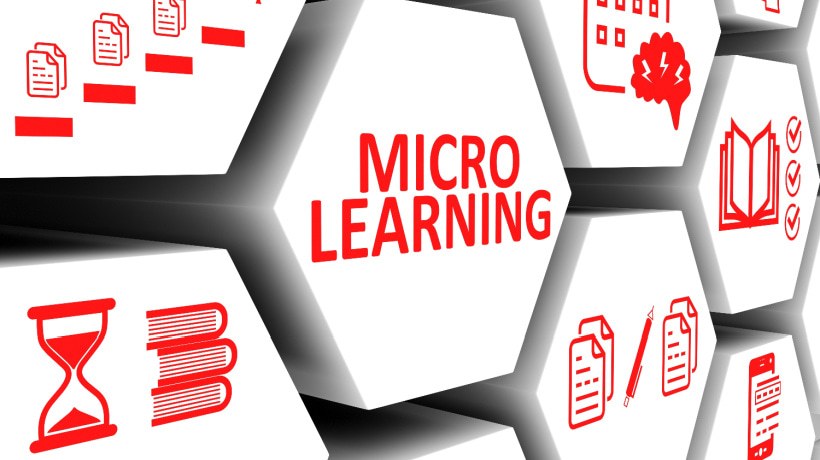Discover The Benefits Of Microlearning
We’ve all heard the story of the wolf in sheep’s clothing. But what about the giant disguised as a dwarf? I’m referring to the giant that’s packaged as a midget in eLearning development—microlearning! Microlearning is not just about redesigning eLearning into bite-sized learning nuggets. It’s a powerful giant that can deliver highly focused learning, with each nugget addressing a specific performance-based learning objective or learning need.
Organizations often emphasize formal training and fail to leverage the benefits offered by informal learning. But, did you know that:
- 80% of an individual’s learning happens informally and 20% of learning happens formally
- Microlearning can help you strike the right balance between formal and informal learning experiences
I’m sure you’re already aware that training delivery through microlearning can help reduce development costs by as much as 50% compared to traditional learning. What else does this bite-sized giant offer training managers and L&D functions?
6 Benefits Of Microlearning
1. Provides Opportunities To Go Mobile
A decade ago, it was hard to imagine learners accessing learning modules on their mobiles. Online training, much like classroom training, had to be completed when you were within the walls of the organization, not outside. But not any longer!
According to the eLearning Market Trends And Forecast 2017-2021 report by Docebo, 87% of people said their smartphone never leaves their side, and an astounding 60% said they believe everything will be done on mobiles in the next 5 years. The Gen Y and Gen Z generations have literally cut their teeth on smartphones and would obviously prefer learning on their mobile devices. Perhaps that’s the reason most organizations are considering or already implementing mobile learning for their employees.
Microlearning is ideal for mobile learning because its range of mobile-friendly formats—videos, infographics, podcasts—are ideal to deliver bite-sized learning nuggets on mobile devices.
2. Reduces Cognitive Load
According to the cognitive load theory, our working or short-term memory is limited and, therefore, the cognitive load of learners needs to be minimum when learning. Cognitive overload in learning is a training manager’s nightmare come true. A good training program (classroom or online) simplifies learning material so that it’s easily processed and retained by learners. With microlearning, it’s easier to avoid cognitive overload because it is structured to deliver content in small chunks.
For instance, if you have to teach learners 10 different concepts where each concept takes anything between 5-10 minutes to explain, a lengthy eLearning course that covers all these concepts can end up overwhelming learners. Instead, each concept can be covered in a microlearning module as an independent unit of learning. Microlearning is also a great strategy to implement spaced learning, an effective method to reduce cognitive load, in return boosting retention and increasing learner engagement.
3. Grants A Fresh Lease On Life For Legacy Courses
Early adopters of eLearning are bound to have courses that were developed in Adobe Flash, as it was then the most popular software available to create eLearning courses. Later on also, when authoring tools such as Articulate Storyline, iSpring, Adobe Captivate, and Lectora Inspire were introduced for eLearning development, they continued to publish in Flash.
Since is Flash being phased out (btw…the deadline is Dec 2020), it’s time to get Flash-based courses converted to HTML5 (if you haven’t already done so). The latest versions of most authoring tools publish eLearning courses in HTML5, making them compatible with different browsers and platforms. When eLearning was first introduced and courses were developed in Flash, most courses were very long, sometimes going up to one and a half to two hours. This does not appeal to the modern learner, especially in this age of instant gratification.
While converting Flash courses to HTML5, consider making them more engaging and effective for learners. Adopting a microlearning strategy can help you convert lengthy, Flash-based eLearning to interesting, bite-sized nuggets of learning. Have a curriculum of microlearning assets. You could also transform parts of the Flash-based content to useful job-aids that can be quickly accessed on mobile devices. Isn’t it wonderful how microlearning can give legacy courses a fresh lease on life?
4. Quickly Repurposes Existing Training Content
What’s nice about microlearning is that it doesn’t require spending too much time and resources on creating new content. It’s all about reusing and repurposing content.
Use existing classroom training material, it could be anything from hardbound manuals to digital videos or audio lectures from SMEs and trainers. Those lengthy eLearning courses that were developed years ago, can still be repurposed (provided the content is still relevant).
Chunk content to deliver a series of microlearning modules, with each module focusing on delivering a performance-based learning objective. You also get the added benefit of saving your SMEs time as they will not have to spend time in sourcing content. Short learning modules will also enable faster review cycles.
5. Enables Efficient On-The-Job Coaching
The ultimate goal of any training is to achieve the business objectives of the organization. Effective training and coaching help employees perform their tasks better and deliver results, thereby improving the organization’s productivity. It’s like a chain reaction. Falter in the first one, and productivity goes downhill.
Even when learners have completed eLearning or blended training programs, it’s practically impossible for them to retain all the information. Microlearning can be used to provide efficient coaching while your employees are learning the ropes. Instead of approaching a peer or supervisor, employees can quickly access microlearning modules on their mobiles and use them as quick references to help complete their tasks.
6. Makes Translation And Localization Easy
For global organizations dealing with different cultures, languages, market variations and sales strategies (according to country/region), training and L&D functions can’t prescribe a one-size-fits-all solution.
With microlearning, it is easier to translate and localize content as compared to traditional eLearning courses. Consider a microlearning curriculum for sales teams in the Americas and Asia. An example that’s relevant to learners in the US may not be relevant to learners in China. With microlearning, it’s easier to tweak content for localization and also update content when required.
Using Microlearning For Different Types Of Training
So, let’s come to the "What’s in it for me?" question. Granted, microlearning is very useful, offering umpteen benefits, but where can you use microlearning in your organization?
Here’s a quick overview of how you can use it in different types of training.
1. Sales Training
Training sales professionals is not an easy task, considering they are almost constantly on the move. Whether it is for selling products or services, sales teams would benefit immensely from information that’s available in their moment of need. Some of the microlearning formats that you could try:
- Animations or videos that demonstrate how a product works
- Quizzes that test product and sales knowledge
- Infographics that highlight the key features of a product or the benefits of a service
Here’s an example: We developed a series of microlearning modules for our client who wanted to provide a recap of specific sales concepts to their sales teams, complementing their classroom training. A storytelling strategy was employed for each module that not only captured learners’ attention but also helped them retain the information.
2. Software Training
Software training can't be done through theory as learners need to be able to use the software, not just understand what it’s used for. They need to learn through practice! Blending classroom training with eLearning and microlearning is an effective strategy for software training, with microlearning modules offering learners opportunities to practice through simulations.
Microlearning can be used effectively to prepare learners to work on the actual software, without facing any consequences due to errors.
We executed a software training project for a client who wanted flexible learning paths for learners, they could either opt for hands-on training in a classroom or practice simulations online.
3. Onboarding
Onboarding new hires is a critical part of new hire training. The more you engage your new hires and help them understand the culture, values, and vision of the organization, the better your chances of retaining them.
Microlearning is so much in tune with the modern learners’ needs. Introduce new hires to the values of the company. A short video from the CEO or the leadership team could do the trick or give them a virtual tour of their new workplace even before they step inside the workplace.
4. Compliance Training
Every organization invests in mandatory training, such as compliance and code of conduct. Instead of making learners sit through lengthy classroom sessions, you could make training effective with eLearning reinforced by microlearning.
Real-life scenarios and case studies can be delivered as microlearning modules that can provide reflection activities and reinforce what they’ve learned.
Wrap Up
Microlearning may be bite-sized but when it comes to the effectiveness of training, it should certainly be considered a giant. Perhaps there’s no other form of training delivery that’s so effective before, during, and after training. Think of it, there’s no other form of training that’s equally effective in both formal as well as informal training.









